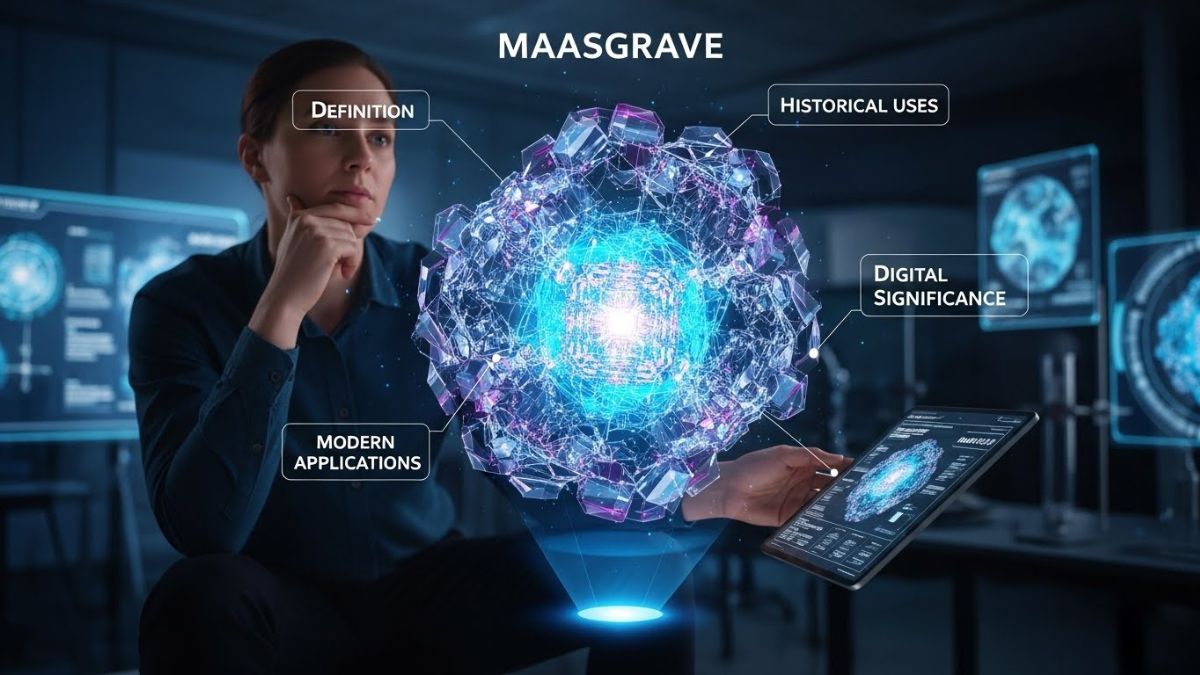TECHNOLOGY
Recycling Ferrous and Non-Ferrous Metals: A Sustainable Way to Reuse

Recycling metals is a pivotal practice in resource conservation and significantly curtails environmental impact. Individuals and industries can bolster their commitment to recycling by distinguishing between ferrous and non-ferrous metals. The continuous technological evolution within the recycling sector enhances efficiency and feeds into broader economic growth and sustainability narratives.
Introduction to Metal Recycling
At the heart of sustainable practices, metal recycling is critical in protecting our natural ecosystems while supporting economic stability. Metals are primarily classified into two distinct categories: ferrous and non-ferrous. Ferrous metals, characterized by their iron content and magnetic properties, mainly include materials like iron and steel. In contrast, non-ferrous metals—such as aluminum, copper, and zinc—are lauded for their malleable and non-magnetic qualities. Ferrous metal recycling is crucial in multiple industries like construction and automotive, supporting a necessary reuse process to lessen reliance on new resources. The burgeoning awareness around resource depletion and climate impact propels the importance of metal recycling as a cornerstone in the global quest for sustainability.
Environmental Benefits of Metal Recycling
The environmental advantages tied to metal recycling must be balanced. One of the most impactful benefits is the substantial reduction in energy consumption. For instance, recycling aluminum conserves over 90% of the energy required for processing new aluminum from bauxite ore. With steel, recycling can reduce CO2 emissions by up to 56%, as detailed in a comprehensive environmental study by the Environmental Protection Agency. These energy savings translate directly into fewer greenhouse gases, becoming a linchpin in the battle against global warming. Additionally, recycled metals mitigate the need for raw material extraction, protecting ecosystems from the devastating impacts of mining operations.
Economic Advantages
Beyond ecological benefits, recycling metals present formidable economic incentives. Opting for recycled metals is cost-effective and reduces the financial burden associated with the extraction and refinement of virgin materials. The recycling industry is a powerhouse in job creation, supporting a vast spectrum of roles from collection drivers to high-tech sorting technicians. Regions with solid recycling programs often witness local economic revitalization, benefiting from increased employment and enhanced community resources. Industries incorporating recycled materials into their production processes experience reduced costs, illustrating the financial viability and profitability of recycling frameworks.
Technological Innovations in Metal Recycling
Innovations in technology continuously revolutionize the metal recycling landscape, optimizing operations while minimizing waste. High-tech sorting systems equipped with advanced sensors and robotics can efficiently differentiate between various metals, thereby increasing the purity and quality of recycled outputs. Artificial intelligence has made significant strides in refining these processes, leading to an intelligent, automated system that significantly reduces human error and contamination.
Ferrous Metals: Advantages of Recycling
Ferrous metals, like iron and steel, form the backbone of modern infrastructure. Recycling these metals conserves energy and raw materials, offering environmental benefits while reducing costs. The global scale of steel recycling is remarkable, with millions of tons repurposed annually into new products and structures. For example, recycled steel finds usage in the automotive industry, construction beams, and household appliances, maintaining quality equal to that of virgin steel. This closed-loop system underscores that ferrous metal recycling is essential to economic and environmental strategies.
Non-Ferrous Metals: Unique Recycling Benefits
Non-ferrous metals, with their distinctive attributes, offer unparalleled recycling benefits. They are desirable for their low density, high conductivity, and corrosion resistance, properties that remain intact through numerous recycling loops. Aluminum, the poster child for non-ferrous recycling, is ubiquitously used from beverage cans to airplane parts. Copper’s excellent electrical conductivity ensures recycled copper remains in demand in electronics and plumbing. Given the finite availability of these resources, their recycling is not simply an option but a necessary step for sustainable management.
Common Questions About Metal Recycling
What are the Most Commonly Recycled Metals?
The most frequently recycled metals include aluminum, copper, iron, and steel. These metals are chosen due to their extensive usage and intrinsic recycle value, facilitated by efficient recycling processes developed over decades.
How Can Consumers Participate in Metal Recycling Efforts?
Consumers play a vital role in metal recycling through conscious practices such as segregating waste and participating in local recycling initiatives. Purchasing products made from recycled metals further supports the demand for sustainable production and completes the recycling loop.
What is the Lifespan of Recycled Metals?
By their inherent nature, metals can be recycled indefinitely without degradation in quality, making them an abundant resource for a sustainable future. This endless recyclability positions metals as pivotal elements in circular economy models.
Future Trends in Metal Recycling
The metal recycling industry is poised to experience continued growth and advancement. Integration of innovative technologies and shifts in public policy are expected to propel recycling practices, enhancing their efficiency and reach. Regulatory policies promoting sustainable practices and public educational campaigns will increase awareness and participation in recycling programs.
TECHNOLOGY
Maasgracve: Exploring Its Meaning, Uses, and Digital Significance

In a world where new digital terms emerge daily, maasgracve has recently captured attention. Though unfamiliar to many, it is increasingly being discussed across online platforms, SEO strategies, and niche communities. Understanding maasgracve is important for digital enthusiasts, marketers, and content creators who want to stay ahead in modern online ecosystems.
This guide will explore maasgracves from its conceptual meaning to practical applications, providing insights into how it functions in digital spaces and why it holds potential for future trends.
Understanding Maasgracve
The term maasgracve does not conform to typical naming conventions, which makes it unique. Unlike widely recognized terms, maasgracve is flexible, serving as both a concept and a keyword for digital experimentation.
At its core, maasgracves represents innovation and adaptability. It can be applied in diverse ways depending on context, such as identifying online projects, emerging platforms, or unique digital identifiers. This flexibility is what gives maasgracves its growing appeal among creators and users alike.
Origins and Background of Maasgracve
The emergence of maasgracve reflects a broader trend in digital communication, where originality and uniqueness are highly valued. Many modern terms evolve from online communities, software projects, or branding experiments, and maasgracves fits neatly into this category.
Unlike conventional words, maasgracves was likely designed to stand out in search engines and social media discussions. Its uncommon structure makes it memorable, helping early adopters gain visibility in online ecosystems without direct competition from existing keywords.
Why Maasgracve Is Becoming Popular
Several factors contribute to the rising interest in maasgracve:
-
Distinctiveness – Maasgracves unique spelling ensures it stands out online.
-
Adaptability – It can be applied to multiple digital projects and contexts.
-
SEO Potential – Low competition allows content creators to rank more easily.
-
Curiosity Factor – Its unfamiliar nature encourages engagement and exploration.
By combining distinctiveness with practical digital utility, maasgracves is carving a niche for itself in both content creation and online strategy discussions.
Maasgracve in Digital Spaces
Digital Identity and Branding
In digital marketing and online platforms, having a unique identifier is valuable. Maasgracve can serve as a brand name, a project label, or even a conceptual identity. Its versatility allows users to define it according to their goals, making it an asset for emerging projects or online experiments.
Search Engine Optimization
From an SEO perspective, maasgracves is advantageous. Unique keywords with minimal competition allow content to gain visibility faster than generic terms. By creating informative, human-written content around maasgracve, websites can establish authority while keeping keyword density below 4%, ensuring natural readability.
Practical Applications of Maasgracves
Conceptual Applications
Maasgracve can function in multiple ways depending on intent:
-
As a framework for organizing digital content
-
As a unique identifier for niche projects
-
As a discussion reference in online communities
-
As a brand element for emerging initiatives
Its abstract nature gives users freedom to create content, products, or platforms around it without limitations.
Content Creation Opportunities
Content creators can benefit from maasgracves by producing guides, tutorials, or analytical articles centered around the term. Since it is not widely known, original content gains attention quickly, establishing both authority and user trust.
SEO Advantages of Maasgracve
Low-Competition Keyword
One of the biggest advantages of using maasgracve is its low competition in search engines. While generic terms are oversaturated, maasgracves allows websites to rank higher with unique, informative content.
Long-Term Digital Value
By consistently creating value-driven content around maasgracve, websites can build a niche authority. Over time, this keyword can become synonymous with high-quality, specialized information, enhancing both credibility and online presence.
Potential Challenges
Despite its advantages, maasgracve presents certain challenges:
-
Lack of established meaning may confuse some users
-
Requires consistent explanation to ensure clarity
-
Needs high-quality content to gain traction
Addressing these challenges involves producing clear, informative, and engaging content that defines maasgracve and its practical uses.
Building Authority Around Maasgracve
Focus on Educational Content
To establish authority, content should educate users about maasgracve. Explaining its context, applications, and relevance builds trust and encourages engagement.
Consistency Is Key
Regularly referencing maasgracve in related content, blogs, and social posts helps reinforce its presence. Consistent usage enhances both user familiarity and search engine recognition.
Future Potential of Maasgracve
The future of maasgracve is promising. Its adaptability allows it to evolve with changing digital trends, whether as a brand identity, a conceptual framework, or a niche keyword. As more content references it meaningfully, maasgracve could become a recognized term in digital marketing, SEO, and online project development.
Engaging Users With Maasgracve
Curiosity is a strong driver of engagement. Maasgracve, being unfamiliar yet intriguing, encourages users to read, research, and interact with content that explains it. This natural engagement cycle benefits creators by increasing time on page, shares, and overall online authority.
Final Thoughts
Maasgracve is more than just a keyword. It is a representation of digital innovation, flexibility, and uniqueness. Its growing relevance in SEO, online branding, and content creation shows that new terms can quickly gain traction when used strategically.
By creating clear, human-written content that explores maasgracve thoroughly, creators can not only educate audiences but also establish long-term digital authority. In the rapidly evolving online world, maasgracve is a shining example of how originality and adaptability can lead to meaningful impact.
TECHNOLOGY
Exploring miuzo: The next big thing in digital innovation

Welcome to the world of miuzo, where digital innovation meets groundbreaking technology. As we navigate an ever-evolving landscape filled with gadgets and apps, miuzos stands out as a beacon of progress. Imagine a platform that not only enhances your everyday life but also redefines how we interact with technology. With its unique capabilities and user-friendly interface, miuzo is more than just another tool; it’s a transformative experience waiting to be explored. Dive in as we unravel the essence of miuzos and discover why it might just be the next big thing in digital innovation.
The Technology Behind miuzo
At the core of miuzo lies cutting-edge technology that drives its innovative capabilities. This platform combines artificial intelligence and machine learning to create an intuitive user experience.
Miuzos processes vast amounts of data with unmatched speed, adapting to individual needs seamlessly. Its algorithms enable personalization, making every interaction unique.
Additionally, miuzo leverages cloud computing for scalability and efficiency. This means users can access features anytime, anywhere without lag or interruption.
The integration of blockchain technology enhances security and transparency in transactions. Users can rely on robust safeguards against unauthorized access.
Moreover, the user interface is designed with simplicity in mind. Even those unfamiliar with tech can navigate it easily.
This blend of technologies positions miuzos as a frontrunner in digital innovation while paving the way for future advancements across various sectors.
Key Features and Benefits of miuzo
miuzo stands out with its user-friendly interface. This accessibility ensures that users of all technical backgrounds can navigate the platform effortlessly.
One of its standout features is real-time data processing. This allows businesses to make informed decisions quickly, adapting to market changes almost instantly.
Security is another priority for miuzos. Advanced encryption protocols safeguard sensitive information, giving users peace of mind.
Seamless integration with existing tools enhances productivity by streamlining workflows. Businesses can connect various applications effortlessly, reducing time spent on manual tasks.
Additionally, customizable analytics provide insights tailored to specific needs. Users can track performance metrics crucial for growth and optimization.
These key features collectively position miuzos as an essential tool in the digital ecosystem, driving innovation while delivering tangible benefits across industries.
How miuzo is Changing the Digital Landscape
miuzo is redefining how we interact with digital platforms. By integrating advanced algorithms and user-friendly interfaces, it enhances user experience like never before.
With its innovative approach, miuzo empowers businesses to engage customers more effectively. This shift allows for personalized content delivery that resonates with users on a deeper level.
Moreover, miuzo promotes seamless integration across various devices and applications. Users can access services effortlessly, breaking down barriers that once hindered connectivity.
The rise of miuzo also inspires creativity among developers. It encourages them to explore new possibilities in app design and functionality.
As companies adopt this technology, traditional methods are being replaced by smarter solutions. The entire digital landscape is evolving rapidly as a result of these advancements.
Real-life Applications of miuzo
miuzo is making waves across various sectors. Its versatile applications are transforming how businesses operate.
In healthcare, miuzo streamlines patient management systems. By centralizing data, it enhances communication between doctors and patients. This leads to better treatment outcomes and increased efficiency.
Education is another area where miuzo shines. It offers innovative tools for personalized learning experiences. Teachers can tailor lessons based on student needs, fostering engagement and improving academic performance.
Retail also benefits from miuzo’s capabilities. With real-time analytics, retailers can optimize inventory management and enhance customer experiences through targeted marketing strategies.
Even in environmental initiatives, miuzo plays a role by providing solutions for monitoring sustainability efforts. Organizations can track their carbon footprint more effectively with the technology’s robust data analysis features.
The potential of miuzo continues to expand as industries discover new ways to leverage its strengths in everyday operations.
The Future of miuzo and its Impact on Society
The future of miuzo promises to reshape how we interact with technology. As it evolves, its ability to integrate seamlessly into daily life will redefine convenience and efficiency.
Imagine smart cities powered by miuzo’s capabilities, where traffic flows effortlessly and energy consumption is optimized. This innovation could lead to sustainable living environments that minimize waste while enhancing quality of life.
Moreover, the potential for personalized experiences is vast. miuzo can adapt services based on individual preferences, making interactions more engaging and relevant.
Education stands to benefit significantly as well. With tailored learning experiences driven by this technology, students can access resources that match their unique learning styles.
As society embraces these advancements, ethical considerations will emerge. Prioritizing privacy while harnessing the power of miuzo will be crucial in ensuring trust between users and technology providers. The balance between progress and responsibility will define our collective digital future.
Conclusion
As we explore the dynamic world of miuzo, it becomes clear that this innovative platform is more than just a technological advancement; it represents a significant shift in how we interact with digital tools. By harnessing cutting-edge technology, miuzo provides users with an array of features designed to enhance productivity and creativity.
The impact of miuzo reaches far beyond individual users. Its applications are transforming industries and redefining standards for efficiency and collaboration. As communities adopt this groundbreaking solution, the potential for positive change grows exponentially.
Looking ahead, it’s exciting to envision how miuzo will continue to evolve and influence our society. With its commitment to innovation, there’s no telling where this journey will take us next or what new possibilities await on the horizon. Embracing platforms like miuzo could very well be a pivotal moment in our digital future—one filled with opportunities yet to be discovered.
TECHNOLOGY
The Ultimate Guide to Personalizing Your Space with wallapix

Your living space is a canvas, waiting for your unique touch. Enter wallapix, the innovative platform that transforms ordinary walls into extraordinary reflections of your personality. Imagine stepping into a room adorned with images capturing cherished memories, breathtaking landscapes, or vibrant artwork that speaks to you. With wallapix, personalizing your environment has never been easier or more enjoyable.
Whether you’re looking to create an inspiring home office, a cozy bedroom retreat, or an inviting living area full of warmth and character, wallapix offers versatile options tailored just for you. From customizable prints to various materials and formats, this tool empowers you to design spaces that truly resonate with who you are. Let’s explore how wallapix can help elevate your surroundings and make every corner feel uniquely yours!
Benefits of personalizing your space with wallapix
Personalizing your space with wallapix brings a fresh vibe to your home. It transforms blank walls into vibrant canvases that reflect your personality and style.
When you choose images that resonate with you, the environment becomes more inviting. A customized atmosphere fosters creativity and comfort, making it easier to unwind after a long day.
Additionally, personalized decor can spark conversations. Unique artwork or family photos often draw attention, allowing guests to connect over shared memories or stories behind the images.
Moreover, wallapix offers endless possibilities for customization. Whether it’s large-scale prints or smaller accents, the options allow for flexibility in design.
Creating a personalized look also boosts mental well-being. Surrounding yourself with cherished moments can evoke happiness and nostalgia every time you walk into the room.
How to use wallapix to create a unique and personalized look
Using wallapix is an exciting way to transform your space into something truly personal. Start by selecting images that resonate with you—whether they’re family photos, travel snapshots, or art pieces.
Once you’ve chosen your favorites, explore the various product options available on wallapix. You can create stunning canvas prints, custom posters, or even wallpaper featuring your unique designs.
The platform allows for easy customization of size and layout. Experiment with different arrangements until you find a configuration that feels just right for your room.
Don’t shy away from mixing styles and colors. A vibrant photo gallery can add depth to a neutral space while black-and-white images bring elegance wherever placed.
Consider incorporating text elements into your designs—a favorite quote or meaningful dates elevate the personalization factor further. Your walls will reflect who you are in no time!
Tips for choosing the right images for your space
Choosing the right images for your space can transform its atmosphere. Start by considering the room’s purpose. For a calming bedroom, opt for serene landscapes or soft abstract art.
Think about colors too. Select images that complement your existing decor and enhance the overall color scheme. Warm tones evoke coziness, while cool shades promote tranquility.
Don’t shy away from personal touches. Family photos or travel memories add character and warmth to any environment. These choices reflect who you are and make spaces feel inviting.
Size matters as well—large prints can serve as statement pieces, while smaller ones work best in clusters. Play with different arrangements before settling on a final layout to see what feels right in each area of your home.
Consider seasonal variations; swapping out images periodically keeps things fresh and exciting! Mixing styles also creates visual interest—just stay true to your unique taste throughout it all.
Creative ways to incorporate wallapix into different rooms
Transform your living room into a gallery with wallapix. Use large canvas prints to create a stunning focal point above the sofa. Choose family photos or breathtaking landscapes that resonate with your style.
In the bedroom, consider personalized photo collages on wall decals. They can surround your bed like an intimate storytelling piece, bringing warmth and personality to the space.
For home offices, custom motivational quotes paired with images of achievements can inspire productivity. Wallapix allows you to design these pieces uniquely suited to your aspirations.
Kitchens are perfect for fun and vibrant art pieces featuring food photography or culinary adventures. Brighten up the walls and make cooking feel even more enjoyable.
Bathrooms might seem tricky, but small framed prints or tiles showcasing serene nature scenes can add a spa-like atmosphere. Make every moment relaxing as you unwind in this personal oasis.
Testimonials from satisfied customers
Customers have shared their enthusiasm for wallapix, highlighting how it has transformed their living spaces. One user described the joy of seeing family memories come to life on their walls. The high-quality prints brought an emotional touch that was previously missing.
Another customer marveled at the ease of customization. They appreciated how simple it was to turn digital photos into stunning canvas art. This seamless process allowed them to express their creativity with minimal effort.
A third testimonial spoke about using wallapix in a home office. By personalizing the workspace with inspiring images, they found increased motivation and focus throughout the day.
These experiences underline how wallapix not only beautifies homes but also enhances everyday life through personalized touches that resonate deeply with individuals and families alike.
Conclusion
Personalizing your space can transform not only the look of your home but also how you feel within it. With wallapix, creating a unique atmosphere is both fun and easy. The platform offers an array of features that allow you to customize everything from prints to canvases.
As you explore ways to personalize your space with wallapix, remember that the right images are crucial in conveying your personality and style. Consider what resonates with you—whether it’s family photos, travel memories, or abstract art.
Integrating wallapix into various rooms opens up endless possibilities for creativity. Each room can tell its own story through carefully chosen designs and colors.
The experiences shared by satisfied customers show just how impactful wallapix can be in enhancing personal spaces. Their transformations serve as inspiration for anyone looking to make their living environments more inviting.
-

 GENERAL2 years ago
GENERAL2 years agoDiscovering the Artistic Brilliance of Derpixon: A Deep Dive into their Animation and Illustration
-

 Posts2 years ago
Posts2 years agoSiegel, Cooper & Co.
-

 HEALTH2 years ago
HEALTH2 years agoTransformative Health Solutions: Unveiling the Breakthroughs of 10x Health
-

 Lifestyle2 years ago
Lifestyle2 years agoPurenudism.com: Unveiling the Beauty of Naturist Lifestyle
-

 FASHION2 years ago
FASHION2 years agoThe Many Faces of “λιβαισ”: A Comprehensive Guide to its Symbolism in Different Cultures
-

 Lifestyle2 years ago
Lifestyle2 years agoBaddieHub: Unleashing Confidence and Style in the Ultimate Gathering Spot for the Baddie Lifestyle
-

 Entertainment2 years ago
Entertainment2 years agoGeekzilla Podcast: Navigating the World of Pop Culture, Gaming, and Tech
-

 Lifestyle1 year ago
Lifestyle1 year agoSandra orlow: Unraveling the Story of an Iconic Figure
